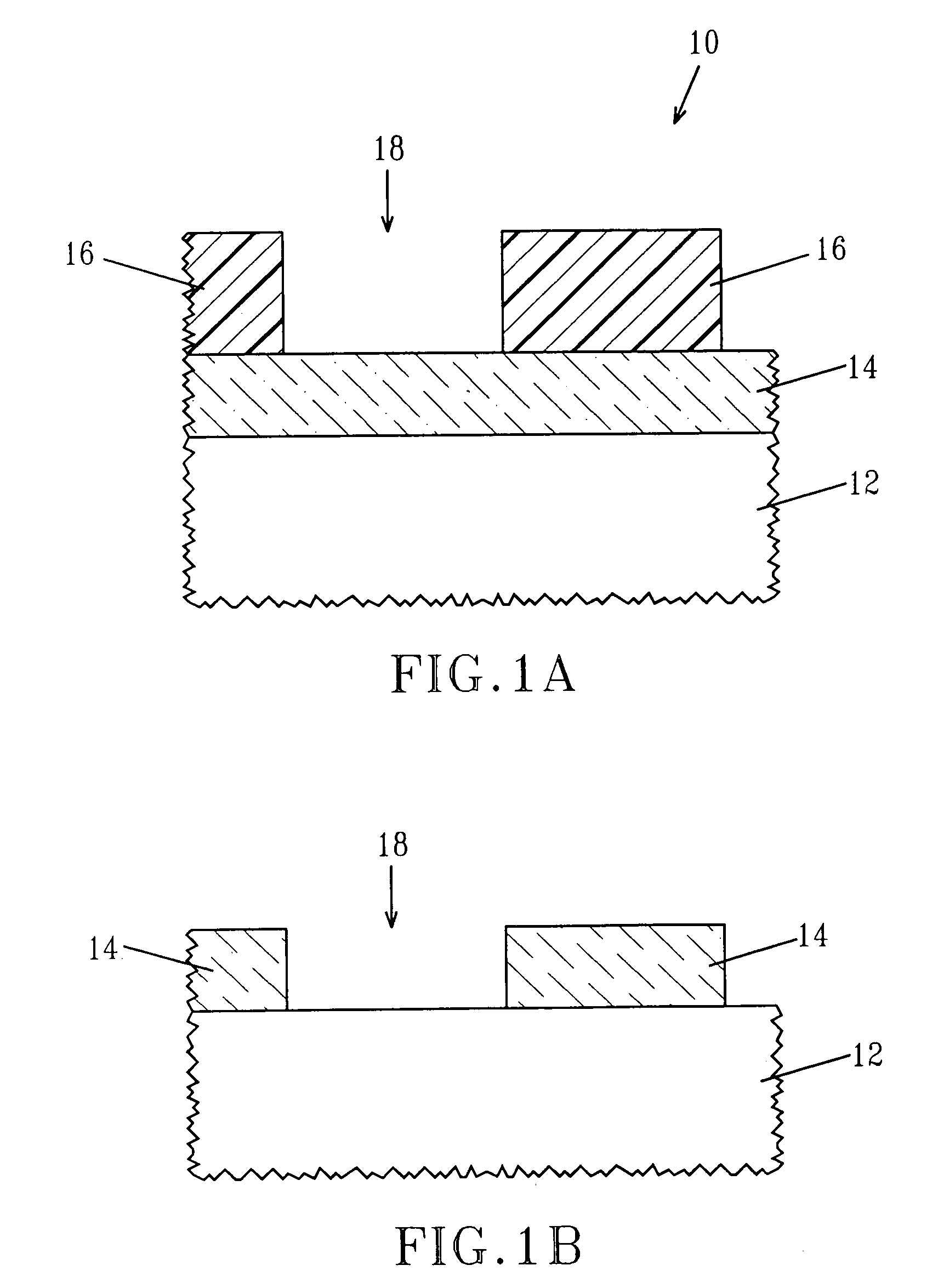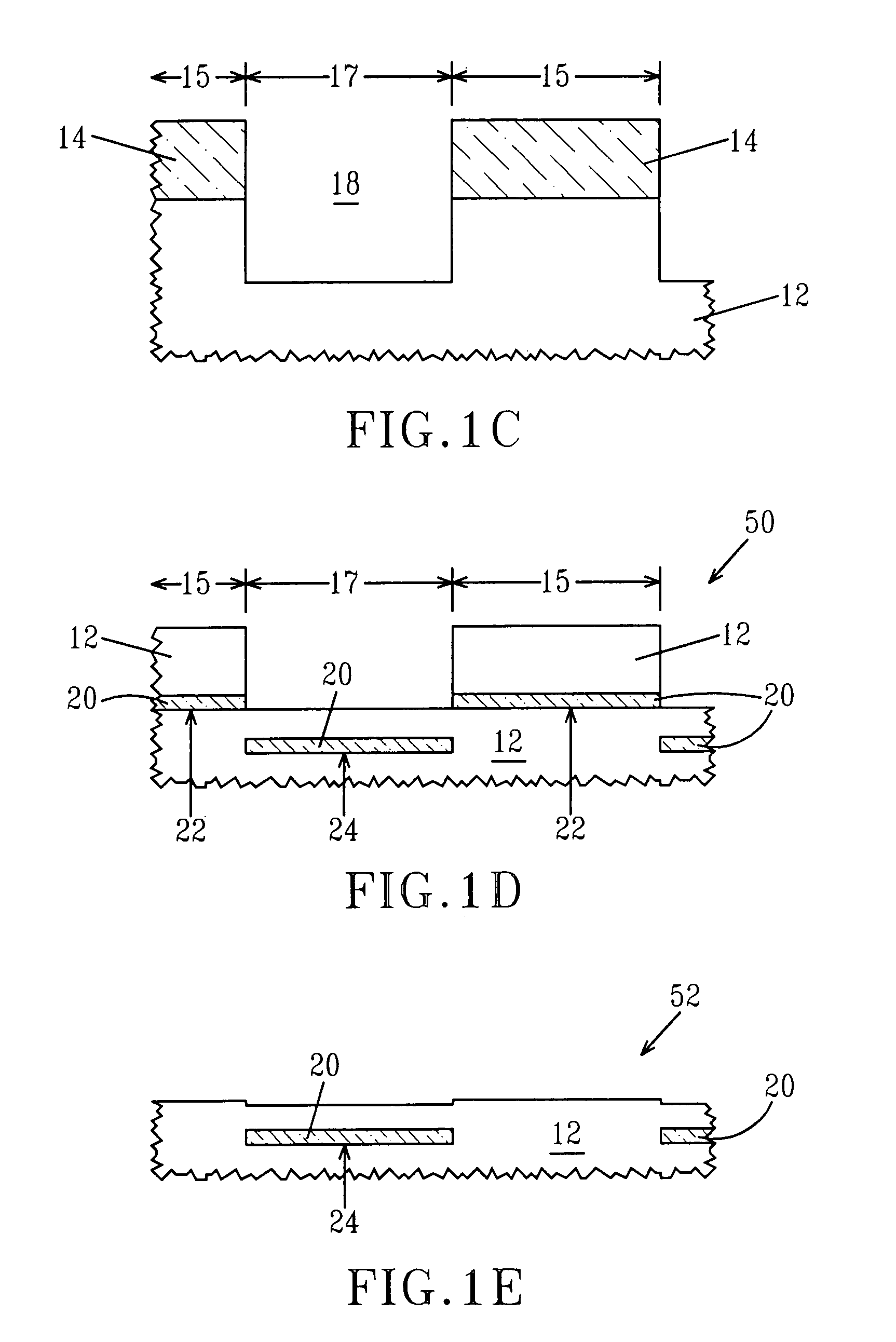Patterning SOI with silicon mask to create box at different depths
a technology of soi and silicon mask, applied in the direction of semiconductor/solid-state device manufacturing, basic electric elements, electric instruments, etc., can solve the problems of different wafer levels or heights of soi devices, high defect rate in the transition region, and defect at all of the patterned edge regions
- Summary
- Abstract
- Description
- Claims
- Application Information
AI Technical Summary
Benefits of technology
Problems solved by technology
Method used
Image
Examples
Embodiment Construction
[0031]The present invention, which provides a method of fabricating a patterned SOI substrate, will now be described in greater detail by referring to the drawings that accompany the present application. It is noted that the drawings of the present application are provided for illustrative purposes and thus they are not drawn to scale. The patterned SOI substrate formed in the present invention may comprise a substrate containing both SOI and non-SOI regions or a dual depth SOI substrate.
[0032]Reference is first made to FIGS. 1A–1E that illustrate one embodiment of the present invention. Specifically, the drawings depicted in FIGS. 1A–1E illustrate the processing flow used in the present invention for fabricating a patterned SOI substrate, i.e., dual depth SOI or a substrate containing SOI and non-SOI regions. The processing flow begins by providing the initial structure 10 shown in FIG. 1A. The initial structure 10 comprises a Si-containing substrate 12, an optional hardmask 14, an...
PUM
 Login to View More
Login to View More Abstract
Description
Claims
Application Information
 Login to View More
Login to View More - R&D
- Intellectual Property
- Life Sciences
- Materials
- Tech Scout
- Unparalleled Data Quality
- Higher Quality Content
- 60% Fewer Hallucinations
Browse by: Latest US Patents, China's latest patents, Technical Efficacy Thesaurus, Application Domain, Technology Topic, Popular Technical Reports.
© 2025 PatSnap. All rights reserved.Legal|Privacy policy|Modern Slavery Act Transparency Statement|Sitemap|About US| Contact US: help@patsnap.com



